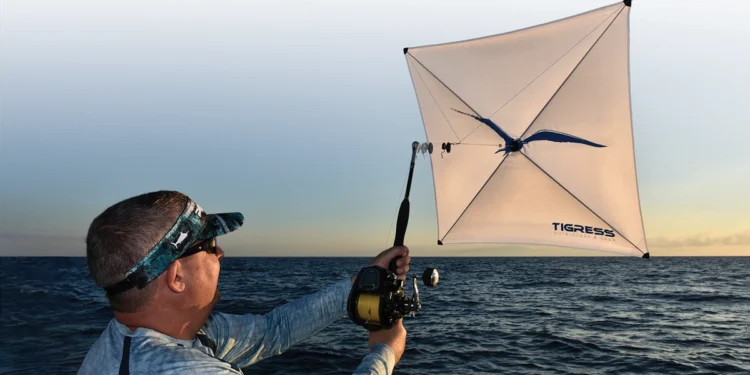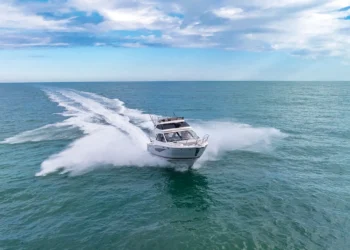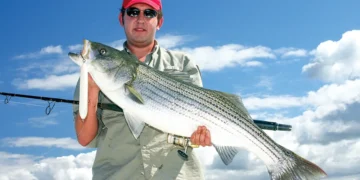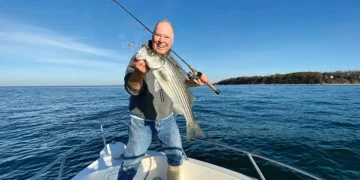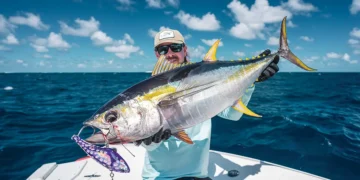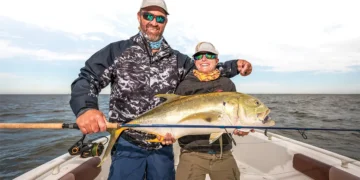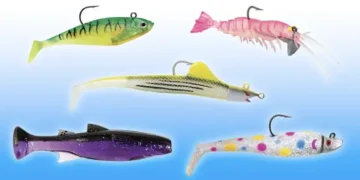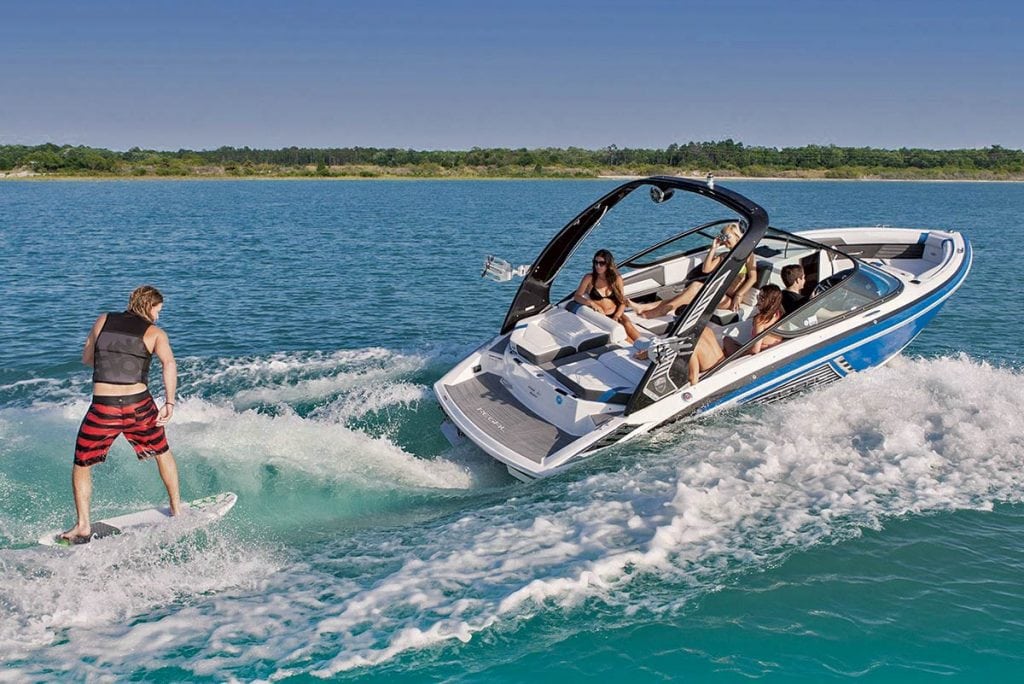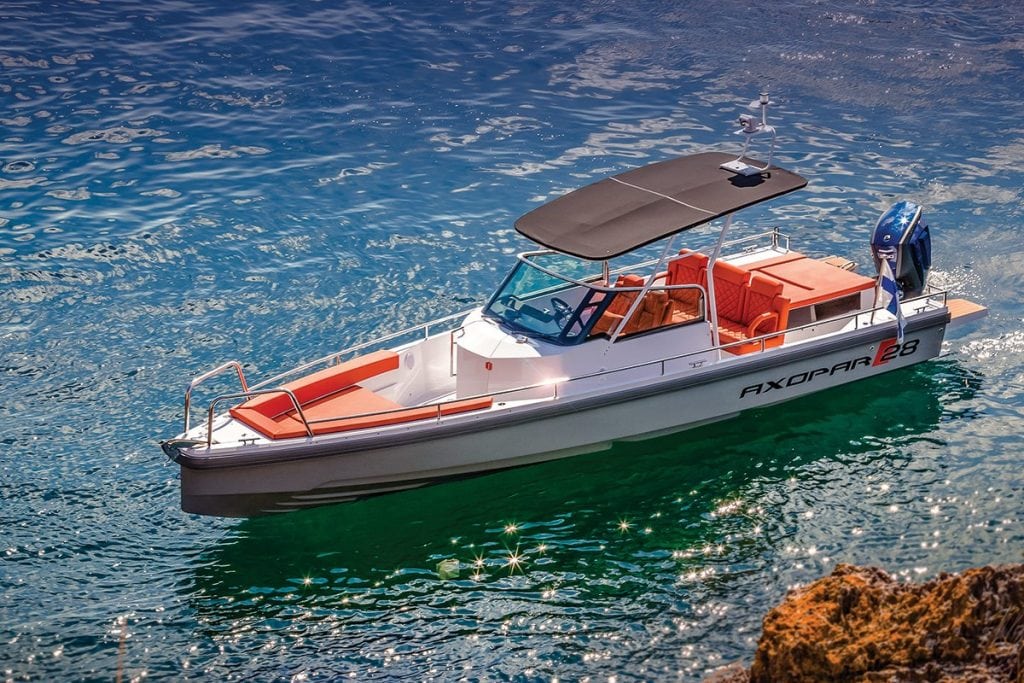Don’t just cast your lines, use a kite to improve your chances for a big catch.
Kite fishing is an excellent technique for catching a variety of species. It gives anglers the advantage of presenting baits in different ways. The kite takes bait away from the shadow and noise of the boat and mimics small fish skimming along the surface to entice fish to strike, in particular, game fish.
It’s said that using a kite to fish originated back in the 1500s with the use of a large leaf as the kite. It took the bait farther away from the shore or their canoes to catch fish beyond the capabilities of their nets and spears. Bob Lewis is credited with developing the modern-day kite when in the Navy, and kite fishing has come a long way since.
Much like an outrigger, a kite line can handle rigging with multiple release clips that allow anglers to present various baits at different distances from the boat. It’s essential to be able to offer baits at varying distances to key in on where in the water column the fish are predominantly feeding.
Also Read
Solara S-310 SB Boat Review: Performance Test While Cruising Puget Sound
Solara S-310 SB Quick Facts Model: Solara S-310 SB (Sport Bridge)Builder: Fluid Motion (Solara • Ranger Tugs • Cutwater)Power: Twin...
Depth of water is another critical factor to consider while kite fishing. Start at a noted depth and work with the current to drift and key in on another depth. For example, where you started fishing is point A and where you’re fishing to is point B, noting the strikes you get while working the drift. Now you can focus on a smaller area between the two depths. Once you reach a certain depth in your drift, it’s time to reel in and reset, making your time on the water more productive.
Kite fishing favors the bold and inventive, not just those with boats. Anglers are discovering it’s perfect for catching mahi, sailfish, and tuna off the southeastern coast of Florida due to its position near the continental shelf and the Gulf Stream. Shore-based long-line fishermen are having great success using kites to get their baits past breaking waves and into areas where snapper and other large fish hang out. Giant bluefin tuna anglers are using the technique out in California. Lures that look like flying fish and such will work with kite fishing, but live bait is almost essential as they are much more lively than a lure.
Subscribe Here For More Boating Content
Choosing the Right Kite
Conditions on the water constantly change, and there are fishing kites designed for different needs, thus they come in many sizes and ratings. Tigress Outriggers’ Specialty Lite Wind Kite flies in 5-10 mph winds, perfect for those calmer days on the water. The kite is constructed using heavy-duty white nylon fabric, easy to spot if the kite ends up in the water. The All-Purpose Kite will fly steady in 10-15 mph winds, an excellent option for gusty conditions. Its high-visibility yellow color makes it easy to track in the sky and quick to find in the water. The Hi-Velocity Kite comes in high-visibility blue and has four holes to control wind speeds of 15 mph or more, which makes it a worthy adversary for those sportier days on the water. Each kite comes equipped with lightweight spars constructed of 100 percent carbon graphite. One extra spar is included with every kite.
Rods, Reels, and Accessories
To fly the kite, you’ll need a kite rod that’s stout and about three feet long as well as a kite reel with line attached to the kite. A 50- to 80-pound line should be enough. Don’t forget, you’ll need a separate rod and reel to haul in your catch.
Like rod holders for your fishing gear, you’ll need one designed to hold the kite rod. There are numerous rod holder options where anglers can have multiple rods along with the kite rod in one mount. Some even include cupholders.
Kite line assemblies and kite braid are available in 100-, 80-, and 50-pound tests and include clips and swivels. The release clips are similar to those used on outriggers and let out the fishing line when a catch pulls on it.
Kite rings, kite line marker tape, kite balloons, kite strings, kite line markers, and kite ring assemblies are available in a comprehensive rigging kit or can be purchased individually.
Also Read:
Sport Express Cruiser Buyers’ Guide: 22 Standout Boats Going Into 2026
Performance and power come together in 22 versatile vessels. Quick Facts Coverage: 22 sport express cruisers across cats,...
Once rigged, releasing the kite can be the most difficult part as it relies solely on the wind. Larger boats with cabins can block the wind, while center consoles have an easier time launching the kite. Once in the wind, slowly let out the line and keep it taught as you set the clips. If it starts to wobble, bring it back in and check its balance with the bridle lines. Like the kite for kids, don’t let it dive down into the water. It’ll seem like forever reeling it back in.
Expand your casting reach with a kite, and stop by a local tackle shop (or search online) for more on the nuances of kite fishing.
Tigress Outriggers & Gear has been offering anglers innovation and quality materials in its fishing accessories for 25 years. From kites to outriggers to mounts and rod holders, Tigress continues to expand its product line. tigressoutriggers.com
-by Tigress Outriggers


